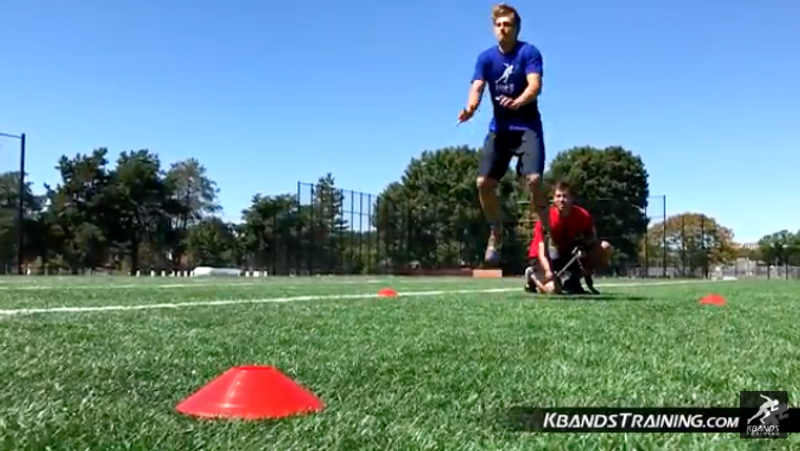Do Jumping Plyometric Drills Help Increase Your Speed or Just Your Vertical?
You've seen vertical jump training drills and sprint training drills. Did you know that vertical training can also help improve your speed? Yes, it's a fact. Building power during vertical jump training can translate to our body's ability to be explosive from the start. Generating power off the ground is proven to translate to greater stride length as you accelerate. This specific technique combines both vertical and sprint training with the Reactive Stretch Cord. Stream the video below and take a closer look.
Vertical Jump Training vs. Sprint Training
This drill combines both of these training techniques, creating a unique way to train both elements utilized in plyometric training. Let's take a closer look at each of these training techniques.
Vertical training requires high-impact plyometric drills. Learning how to explosively accelerate off the ground as soon as your body strikes will help your neurotransmitters fire faster. Over time, developing these skills will increase not only your vertical but also the power you can generate off the ground during each stride. This is why vertical plyometric training can help improve your speed. It can translate to more power off each stride while you are running, leading to a more effective stride length.
Speed training, on the other hand, focuses more on your ability to change directions or sprint linearly. These types of training techniques can be viewed in the later part of the video. After the athlete turns 180°, they will accelerate out into a Reactive Stretch Cord sprint. The acceleration received from the Reactive Stretch Cord will help athletes build the techniques used for acceleration. By creating faster stride turnover, you will have the ability to sprint faster.
Reviewing These Concepts
During the first portion of this drill, you will be building more power optimized by the Reactive Stretch Cord with resisted tuck jumps. This is vertical training at its finest. Give your body more momentum down, followed by explosive kinetic energy up.
The next portion is the linear sprint and agility section. This specific area will challenge your ability to accelerate into resistance and then move quickly through stride turnover with assistance.
Review this video a couple of times to make sure that you are completing it properly. If you are new, you may start this drill only using the sprint phase of the exercises with resistance. As you progress, add in the tuck jump element to enhance your results. For any comments or questions, please feel free to use the contact us tab so that we can help you meet your training goals.

